Vantage Point: The Apex Interviews Nicholas Mee
If you are a car enthusiast, then the name Aston Martin will need no introduction - and if you are serious about your Aston Martins, then you'll probably be familiar with our guest this week, Nicholas Mee. As an established specialist and dealer for over 25 years, Nick is one of the leading names in the Aston Martin community, and with the help of his expert team at Nicholas Mee & Co. provides everything from regular maintenance to full restorations of these wonderful cars, not to mention a constantly replenished stock of fine examples for sale.
Nick joined us this week to talk about his beginnings in the car business, his work with Victor Gauntlett, and his favourite cars - with some James Bond mythbusting along the way, and why you should never take the autoroute on the way to Le Mans...
Hector Kociak interviews Nicholas Mee for The Apex by Custodian. Recorded and Produced by Jeremy Hindle and Guillaume Campos. Transcribed by David Marcus. Edited by Hector Kociak & Charles Clegg.
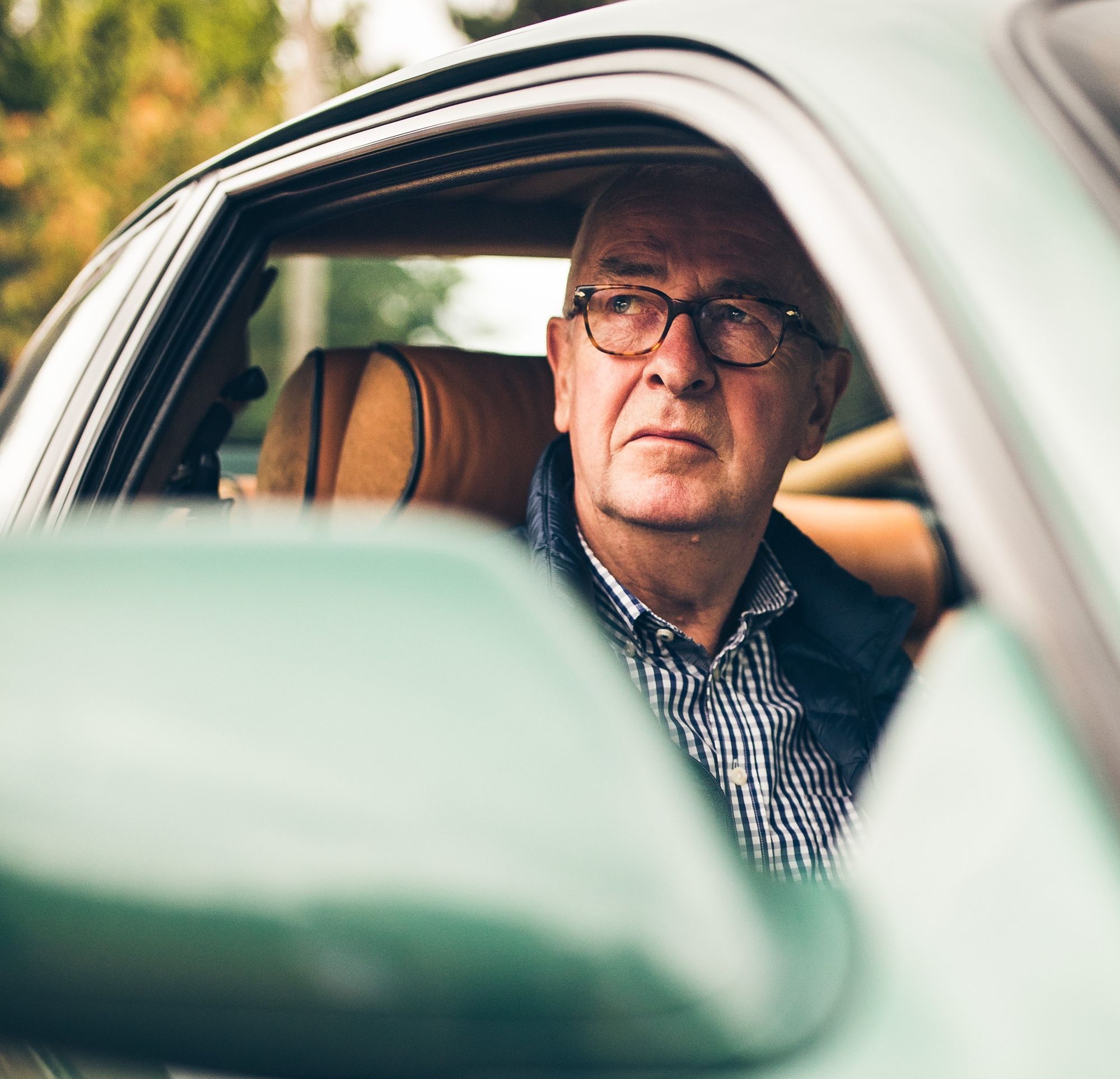
Where did your interest in cars come from, and what was the first proper car that you owned?
I was one of those rather annoying young lads - I used to sit in the back of my parents’ car, naming every car that was coming the other way, the model, and so on. Funnily enough there’s a bit of a family connection to all of this, in so much as my great grandfather apprenticed in London as a wheelwright and coach maker and moved up to Hatfield, literally two miles from where I'm talking to you now. He started a business there as a wheelwright and coach maker, and used to work for Lord Salisbury at the time, the biggest landowner in the area. That progressed through the advent of the motor car to Grays Garages, which was in existence until the 1980s. He went through all of that dawn of motoring really, becoming an AA and RAC agent, and then owning a Morris and Austin dealership and so on. So if you're looking for anything that's in the blood, it probably comes from my mother's side and my great grandfather.
The reality is that since I can ever remember, cars have fascinated me. I was a bit of a swot as a child; later in life when I got to the stage where I could even think about driving, I used to drive cars (highly illegally) on the road as a young lad. They have just fascinated me ever since, and drew me away from further education after leaving school at 16 or 17. I started in the motor trade as a fitter's mate for an organization called Henley’s, back in the late ‘60s.
Do you remember what the first motor car of your own was?
Yes, it's interesting, I was trying to work this one out. I used to go through a succession of cars with great rapidity. The first one actually was a Mini van. Mini vans used to be a lot of fun when you were 17, because you could be a bit reckless in them, and they were quite interesting and cheap...
You've got something in common with our former interviewee David Gandy in this instance, who I think also went through quite a few ‘lower performance’ cars in his youth, trimming hedges and so on.
If you go back in the day, there was more than one that I drove until it broke. Totally irresponsibly, you would just leave it on the side of the road, because they cost like £8 or £10 or something at the time - it was a joke - although it felt like a lot of money at the time!
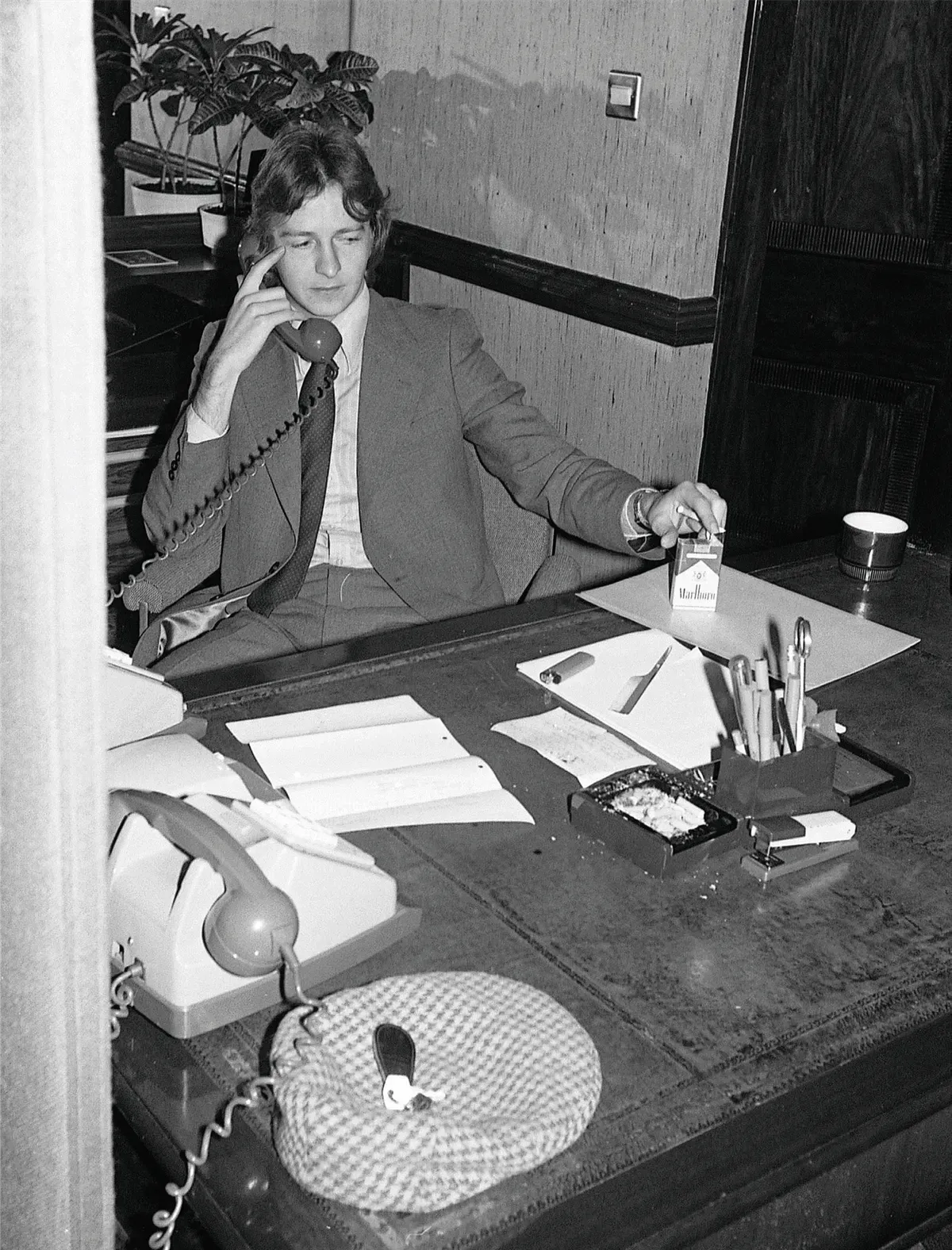
You began working at Aston Martin in the 1970s; for the benefit of our younger listeners, can you tell us about that period, and what the car enthusiast community and market were like at the time?
Pretty interesting actually. I joined Aston in March 1976 after a period of time with HR Owen for about 18 months before that. Aston Martin had, three months previously - I think it was January 1976 - come out of administration. The company had stopped producing cars in 1974, and it was quite a splash at the time. They had applied to the then Secretary of Trade and Industry for grants to keep the business going. Some of you may know that it was no surprise the support wasn't forthcoming, as the individual in question was Anthony Wedgwood Benn, slightly left-of-left if I can put it that way…
I joined Aston Martin in ‘76 and really knew very little about the brand, but I just knew that it was special and British, and I knew that they had doubled my salary! So that was worth doing. At the time I started we had showrooms on the corner of Sloane Street, and on Hans Crescent. At the time I was living in Knightsbridge, so it was very convenient. It was, however, a massive learning curve for me because Aston Martin folks are a fairly knowledgeable bunch and very passionate about their subject; as a young lad of 24 I very quickly found that most people, customers included, knew more about the cars than I did. So I had to learn pretty quickly. The environment was interesting because in the late ‘70s we had a succession of socialist governments, quite high taxation and the legacy of trade disputes with three day weeks and coal strikes and so on. It was a difficult environment, starting at that time and trying to sell what was really already a dated product for a company that had last been in the newspapers because they had gone out of business.
But with some level of tenacity, we started selling motor cars. In fact the first cars we sold were completed in 1976, but they had actually sat on the line for two years, so they had to be finished and then sold; eventually the product got better and better. It was a tough gig, but an enjoyable one because of the people that I was working with, and because of the customers who I was meeting. Regardless of them being a bit more knowledgeable on the product than me in those days, they were quite good fun to be around.

It must have been quite an experience.
You also asked me about the collector car scene at the time. I think it's probably best if I say that the collector car scene at that time was nowhere near the size that it is today. We were talking in those days about collector enthusiasts, and they tended to be a very small minority. People bought cars, ran them for a number of years, and then just kind of binned them, flogged them off or got whatever they could for them. People weren't buying cars to restore, and there wasn't an industry to accompany that. Restoration done in those days was a bloke in his garage at the side of the house in a set of overalls, buying whatever parts he could get in the main. The classic car industry didn't really kick off until you got far into the 1980s.
Speaking of the people you worked with, I know you were a colleague of Victor Gauntlett’s at various points in your career. He was obviously a huge influence on Aston Martin - could you tell us about him, the kind of influence he had on you, and what it was like working with him?
Victor was a larger than life character and a great man, who ultimately became a great mentor to me and a great friend, and I was very sad at his passing. I first met Victor when he pulled into the Sloane Street showrooms one day, where I had a Daytona for sale, and over the course of the day we (eventually) negotiated it. A particularly fine car it was too. He thereafter became quite a good client for a couple of years. One day I was trying to sell him an Aston. I went down to his offices in Farnham, and he was highly critical of the car, but we managed to get a deal done. Fairly promptly afterwards I found out he had been in conversation with Alan Curtis, who was one of the four people who had invested in Aston Martin up until that time. I was delighted, because Victor was a guy who you could do business with, a guy that didn't sit on the fence. You know where you were with him, he didn't suffer fools gladly, and if you did your job and you were courteous and got on with things, had a strategy and so on, he was very supportive. I used to follow his thought process and the way he worked, and I learned a great deal from Victor.



Victor Gauntlett. Credit: unknown
I read somewhere that he was also the person who managed to negotiate the James Bond connection with the Aston V8s?
Yes, that was around 1986 I think. Eon Productions were going to make another Bond film and they wanted to use an Aston. It actually started off with the loan of a car that was part of our used car stock(!), and it spiralled from there as they wanted to have three more coupés they could sling around. So three very second-hand cars were purchased and blown over in Cumberland Grey. With the interiors, I think the guys just opened the doors and blasted black paint everywhere! They were very crude, but they were very effective. Funnily enough Victor was offered a role in ‘The Living Daylights’, which was quite interesting, but he turned it down. They wanted him to be a Russian colonel or something.
That's quite incredible.
Yes, it was going to take up too much of his time, and he was a busy guy. He was a man who used to be at the office at Newport Pagnell at 6:30 in the morning, and very often would conduct his business for the day and then come down to London and drop into the showrooms later in the afternoon to carry out more meetings. I can't imagine he had the time to hang around on a film set!
I just love the idea that James Bond used an approved used Aston Martin. If it's good enough for him, it's good enough for anyone...
Hah, well it's a bit of mythology busting actually, because it's often said that the convertible was Victor’s but in fact it wasn't. It really doesn't matter however, it was a great car, and it set the tone of the film and did a lot of good for Aston Martin at the time.

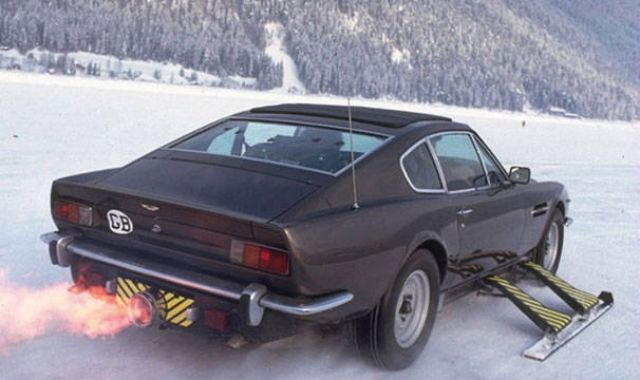

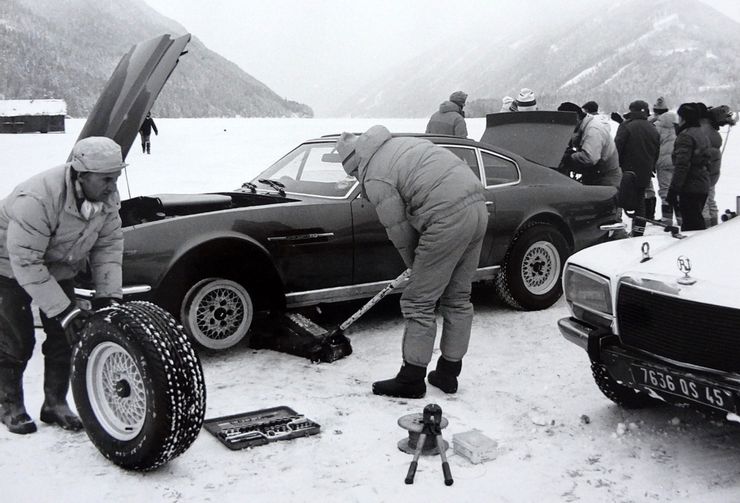

Credit: Eon Productions
I had a few questions about the cars of the era, and maybe we can clear up a few rumours we've heard over the years at the same time. The first being: is it true that the divisive ‘76 ‘wedge’ Lagondas were the ‘saviour’ of Aston Martin at the time, and is it also true that those pioneering digital dashboards that they had are actually incredibly difficult to repair now?
Yes to both. The Lagonda is very interesting, because it's a Marmite car. I remember being on the show stand in Earls Court when it was announced. People queued to order that car, it was on the front page of the Telegraph and the Times and various publications of the day. It was big news, because it was dramatic looking and because of the use of electronics. Aston were really in a bit of a difficult position - they had to continue down this electronic route, even though it was a very problematic thing. To answer the first question though, the order bank for the Lagonda was massive; the car was late but people hung in there waiting for it, and it was a big export car to the Far East, the Middle East and the United States. It brought in money which the V8s in the day weren't doing. Don't forget that in those days there wasn't a convertible V8, which is what the United States market wanted. They don't buy coupés, they like convertibles, that was always the thing.
So yes, without the Lagonda I can categorically tell you Aston Martin would not have passed 1981 without folding again, because it was the money spinner. Of course in 1981 the range by then was the V8, the Vantage and the Volante. But the Lagonda was an old car. It was not new, cutting edge technology, it was showing its age and it was later in the ‘80s that it became retrospectively a fashionable car again. But in answer to the electronics question, yes, they are notoriously difficult to fix. The problem isn't so much the understanding of it, it's actually the componentry. This is a concern for electronics in cars generally; as the technology moves on apace, the manufacturers of the chips and bits and pieces that go into making electronic devices no longer make them because there is no need for them any more. It's becoming a bit of an issue actually; as the classic car world moves on and we get more involved in some of the more modern cars, it's finding the electronic items to make them work or actually repairing electronic items to make them work which is very difficult.
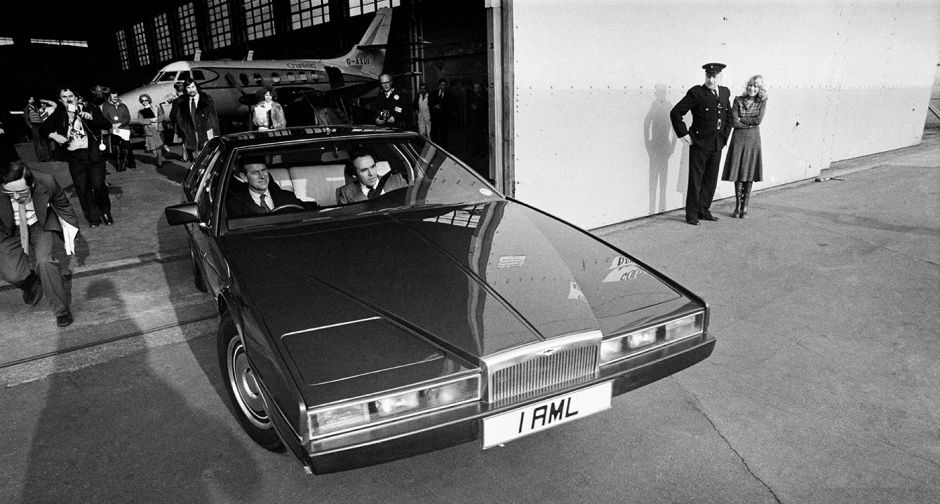
It must take quite a talented technician to dig through that stuff, and know which parts will work.
Again it's one of those things where repairs to these dashboards and touch sensitive components were very often carried out by a 'specialist', normally a one or two man band in a little workshop somewhere that you could send the item off to. Of course these guys move on, they pass away, and then you've got a problem.
The other question I had was about the 1990s era V8s and Virages. They seem to be coming back into popularity now, and I know that you've sold some very special iterations of them including the V550, the V600 and the Vantage Le Mans car. What's your take on that era of Aston Martin, and which iterations are in your opinion the ones to have?
So in the Virage era, the early Virages were definitely underdeveloped. I think that's generally accepted but at the end of the day they do work, are quite comfortable, have been built in very small numbers and they are a coach-built car. They were very accessible from a financial point of view to collectors, but you do have to be very careful that you're not buying something that's going to cost you a lot of money to keep on the road. The later cars though (and by that I mean things like the supercharged Vantage and the V8 Coupés and Convertibles) are a much better car than the early Virage. They benefited from a great deal of development and money actually being thrown at them by Ford, who were pretty pathological about improving the quality of those cars. So they're quite exciting cars, they're quite out of their time if I can put it to you that way, because it was a formula that goes back to Victor's days.
In fact I was part of a team that signed off on the supercharged Vantage in 1991 before I left Aston Martin, and to Victor that car was always a spiritual successor to his favourite car of all time, which was the Blower Bentley. It's the same sort of philosophy: if you want to make a car go faster, take it and strap on a couple of great big superchargers and put some fat tires on it and off you go. It’s a bit like what happened with the Bentleys when they supercharged them, as opposed to going down a more Bugatti-esque route of making it smaller and lighter to make it go faster. It was Victor's way, and they're slightly irrelevant to the day, but that's part of their charm; they exist and they're really rather magnificent cars. A very comfortable place to sit, great on long journeys. Very powerful, and you do get a sense of being sort of a king of the road, which is part of what that car is all about.
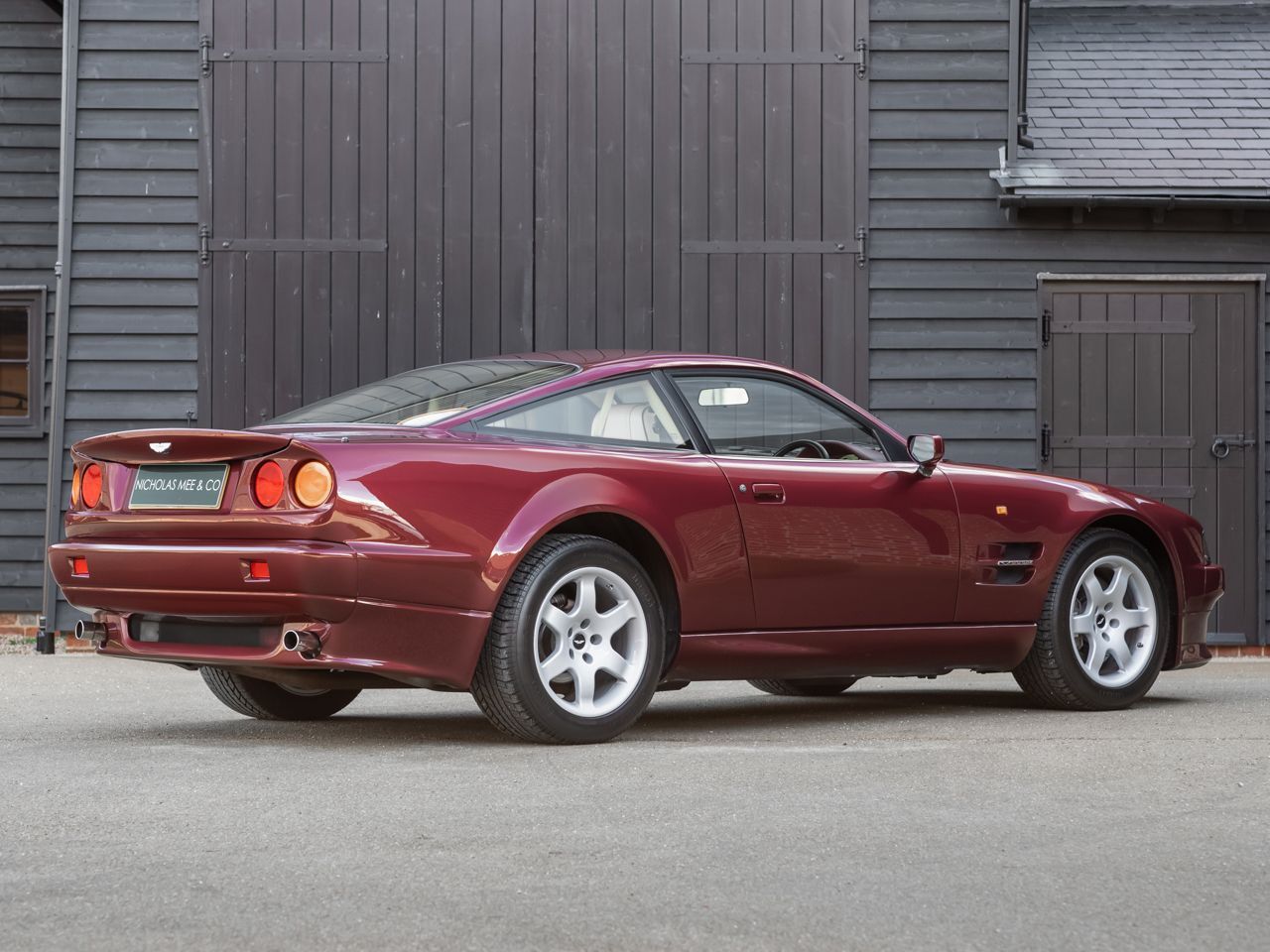
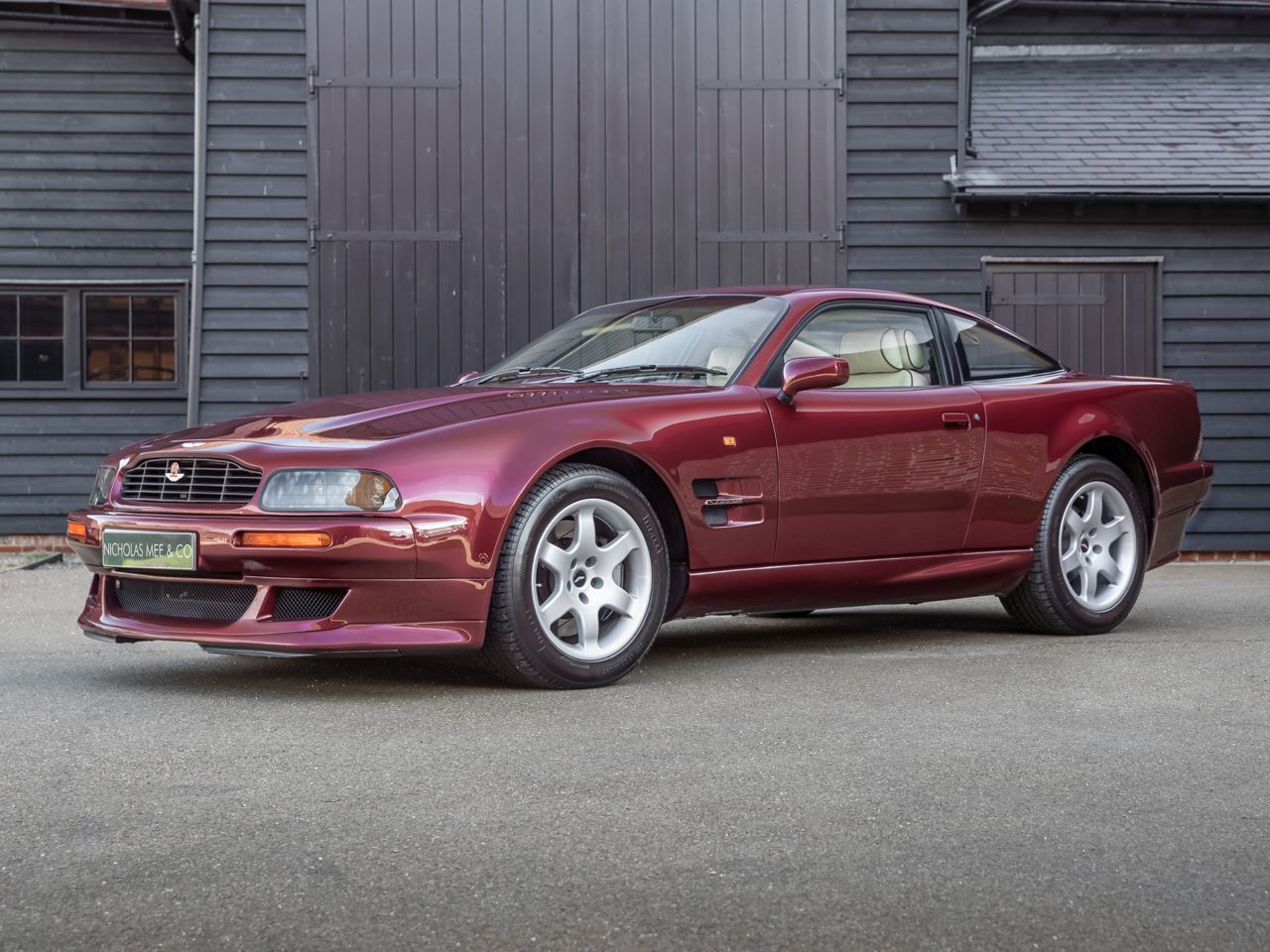
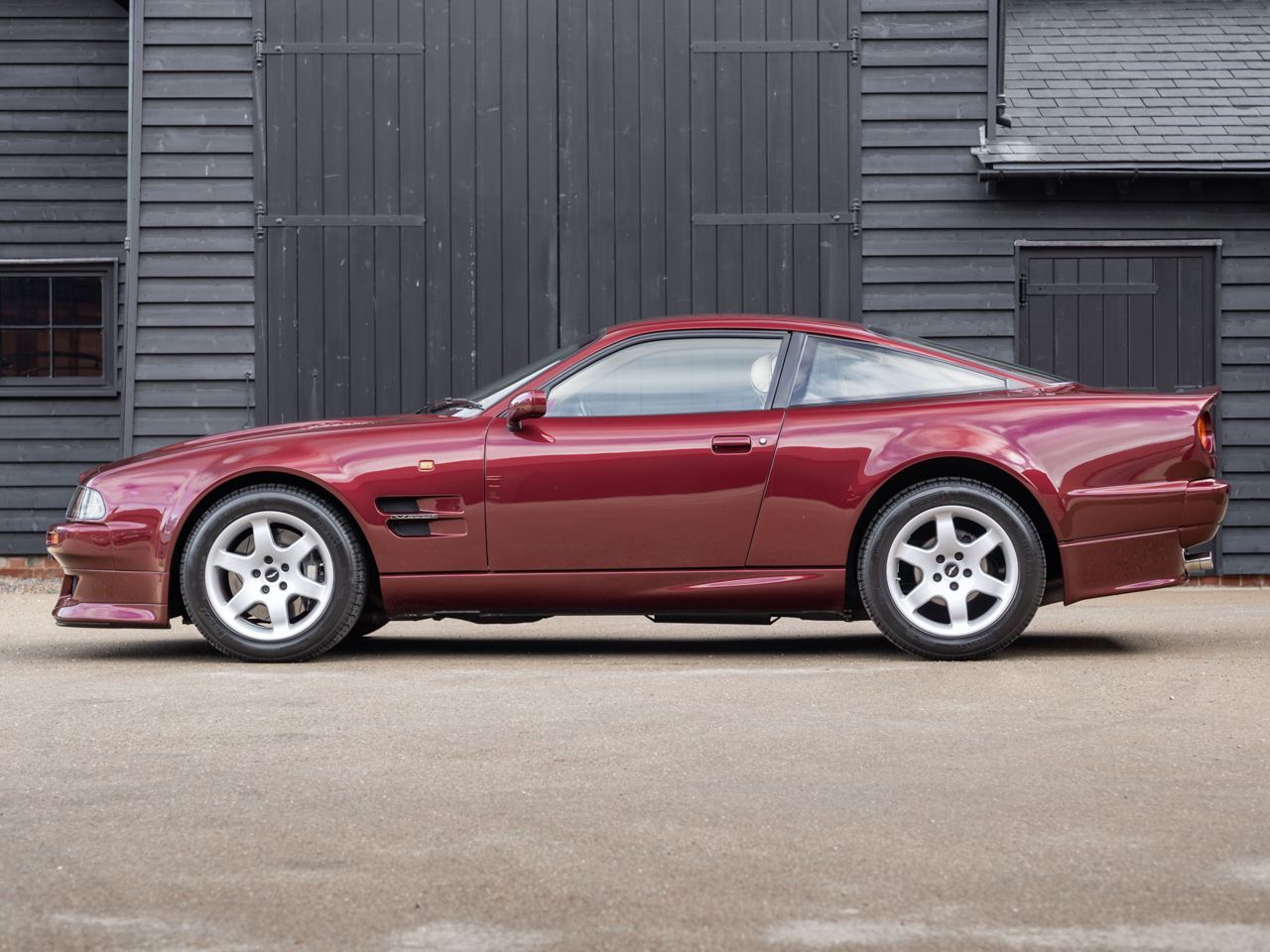

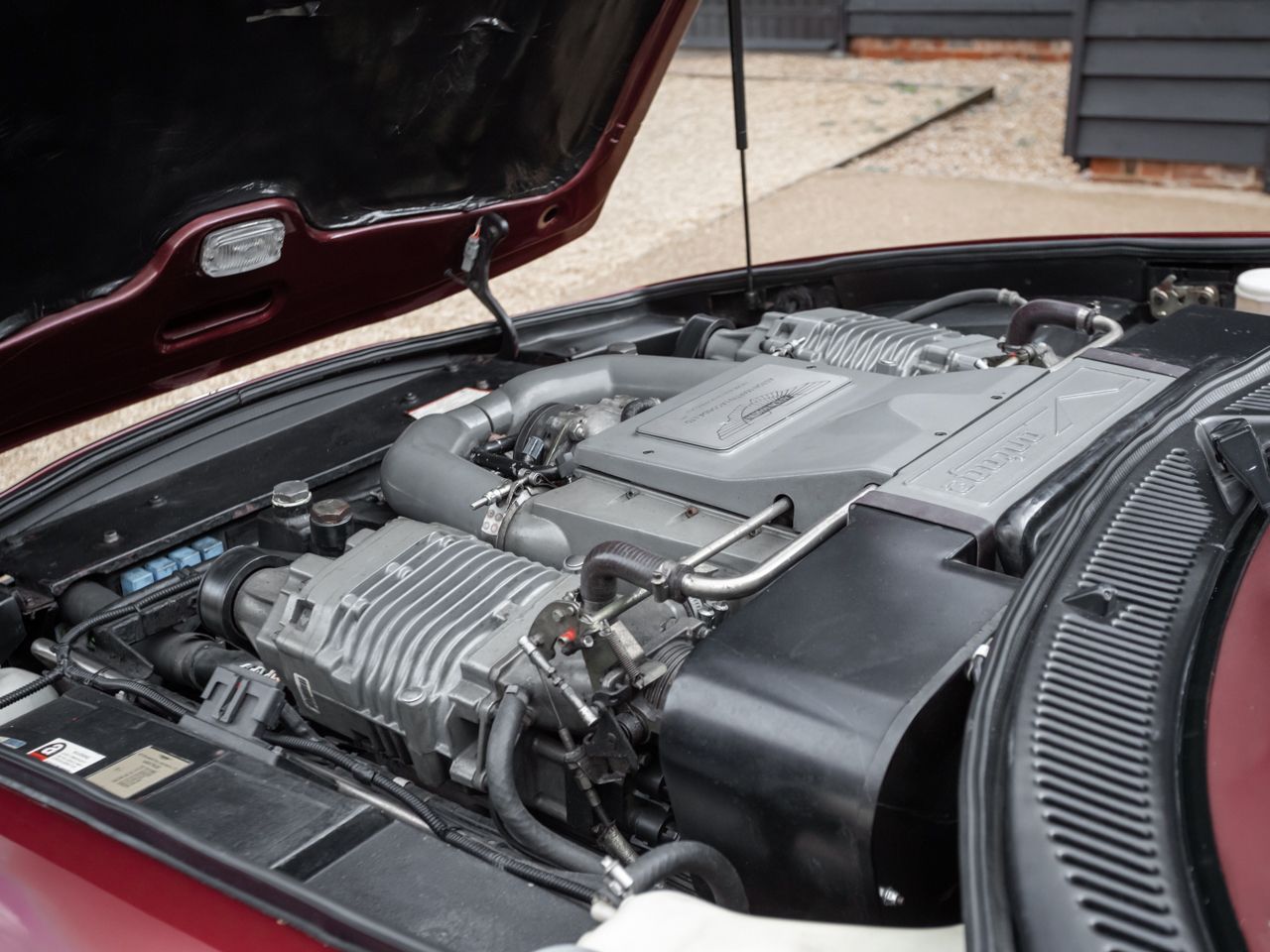
A 1996 Aston Martin Vantage V550 in stock with Nicholas Mee & Co at time of going to press. Credit: Nicholas Mee & Co.
In the course of your business you see a lot of customers of various stripes. Is there a difference in taste and attitude between older Aston Martin collectors and the younger generation?
I think there is actually. Across the board collectors these days do have extraordinarily high expectations of quality, which can be very difficult to meet, because after all a car is born one day, it's brand new and then it goes out in the field; it's a pretty hostile environment that cars live in, so that's a difficult one, particularly for what we term the new era collector.
In our world, the ‘new era’ collector is someone who is buying cars that were Gaydon built cars. On the VH chassis architecture there are various different models and special editions, whether they're Ultimates or Carbon Editions or UB20s or Bond editions or whatever. These are quite interesting cars to collectors, and frankly the new era collector can put together three or four of those cars for the price of a DB4 or DB6, and so you can see where the interest lies. But those guys, they really just want perfection, and that is something that we try to provide for them. We do try to keep a stock of the interesting cars, rather than run of the mill stuff.
On what you might call the older cars, let's say Newport Pagnell cars, I think that most people when they approach those understand that they were a very limited production car, hand built, all a bit different, and are to some degree on a scale of budget that a new era car far exceeds. So they're a little more willing to accept that they may not be buying perfection - but yes, it's a slightly different world, it's a different buyer as well, frankly.
Do you ever see people trying to dip their toes one way or the other? I'd imagine there's some customer education you have to do if you're used to the new era of Aston Martin, and then you think you know what, I'd quite fancy one of the older ones?
A lot of people have a broad selection - they say, I've dipped my toe in the water and I've got a new era car but I really aspire to having a DB6 or a DB5 or maybe a V8 Vantage too. It's a dangerous game to pigeon-hole people into one particular era of car, and we have several clients who have a broad spectrum spanning all the ages. If you do try and delineate it though, yes, the new era collector is a younger guy. The cars are less expensive, so it's no surprise, and they're probably at the beginning of that journey of collecting motor cars. People that are buying into £400,000 DB4s or V8 Vantages at £350,000 or whatever are in more serious money; if you get up to DB5s and DB4GTs or any of the convertibles, you're probably dealing with someone who is a bit more seasoned, and going to be (to some degree) more understanding because they are a little more grounded and have had experience of the older cars in the past. They know what to look for, and are going to be more appreciative of a good car with good history and no question marks. Nobody wants to have an old DB and have to explain what it is to people; they just want it to say what it is, and for it to have a clean bill of health and a good history.

This is answering another question I had, which is what should people who are taking their first step into the world of proper collectors’ Aston Martins be mindful of?
This is going to sound a bit like a sell line, but it is just completely true. What they should not be wary of is buying the best they can; don't be afraid to spend the extra money to get the best quality, because it has been proven time and time and time again that it is the cheapest form of classic car ownership. We are constantly battling people who approach the subject and become overnight experts. They start thinking about getting an old motor car, a collectors’ car, and they look at prices and see that there's maybe a 25% spread on pricing. They're naturally drawn to try to find something that's at the lower end of the price scale, which is understandable, but what they don't always get is that they're going to spend that difference in bringing it up to a good standard. However it's still got the poor history, or it's still got the high mileage. So my only recommendation to any would-be collector is buy the very best you can, and don't be afraid to spend that little bit extra to get the right car in the first place. It is ultimately the most economic route.
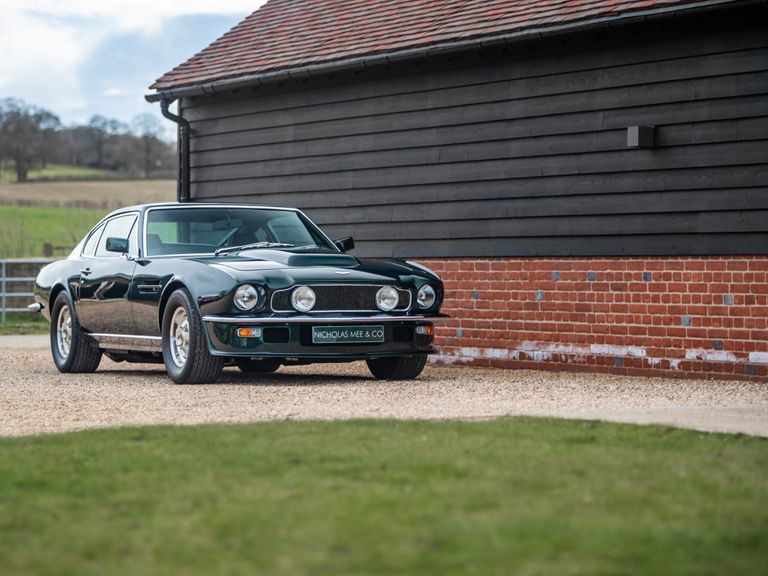
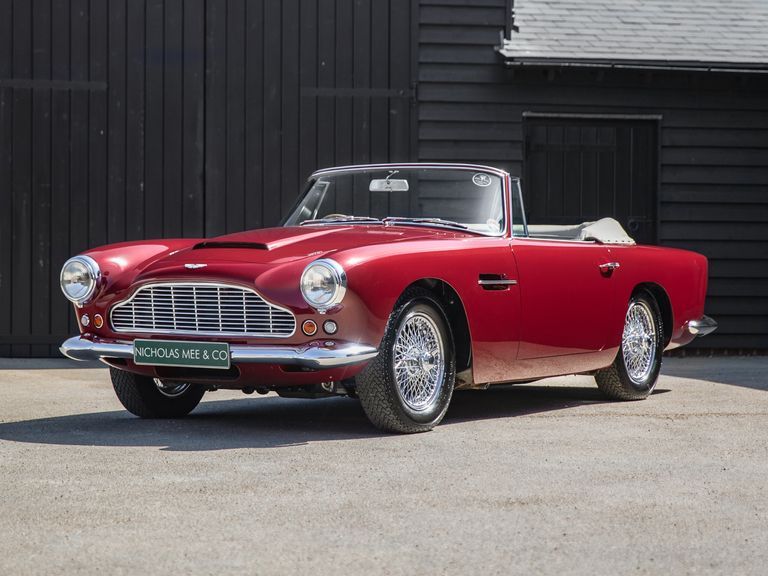



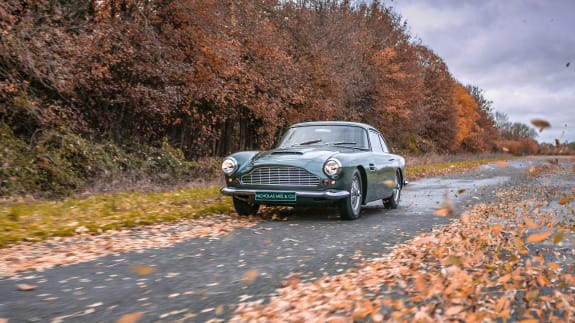

A variety of previous car handled. Source: Nicholas Mee & Co.
Wise words indeed. Taking a step back to talk about Nicholas Mee & Co., the business moved a couple of years ago to the Hatfield House Estate in Hertfordshire after being based in West London. What prompted that move, and what does the new site give you that London couldn't?
You're liking your big subjects here! I had always, up until we moved here, been in favour of London as a base. Going back to the 1980s and ‘90s, Bentley used to sell over 60% of the UK-destined product through Jack Barclay in Berkeley Square. People in those days from Newcastle, Manchester, or Birmingham, if they wanted to buy a new Rolls or Bentley or Aston, would come to London and would make a weekend of it, stay at the Connaught, go and see a show. But London has changed, and the attitude to London has changed. People from outside London actually no longer aspire to go to London. It's a fuss - cameras, parking charges, fines - it's become quite a difficult thing. It’s so busy, and so crowded. We got to a point with the business in 2014-15 where despite having two locations, one of which was a dedicated workshop, and despite the showrooms that we had in the Goldhawk Road, we were just bulging with cars. You can't leave them on the street in London, and you're constantly hemmed in.
When leases started to come up for renewal, we could have opened up workshops in Park Royal or something like that, but we would still have been in an environment that was hostile and beholden to institutional landlords, and would not have any outside space or additional parking. Many years ago a jeweller said to me that if you’re in the jewellery business and you want to double the size of it, you just buy another safe. Well, in the car business, if you want to expand, you have got to have some serious space. So we did a deep dive about how to solve this problem, and we discovered the opportunity to do something up here in Essendon just outside Hatfield. It’s quite special, in so much as it's a 250 year old farmstead that was dilapidated and could have been developed for mixed use, but we took the whole site and spent a lot of money developing it for specific needs of workshops and showroom.
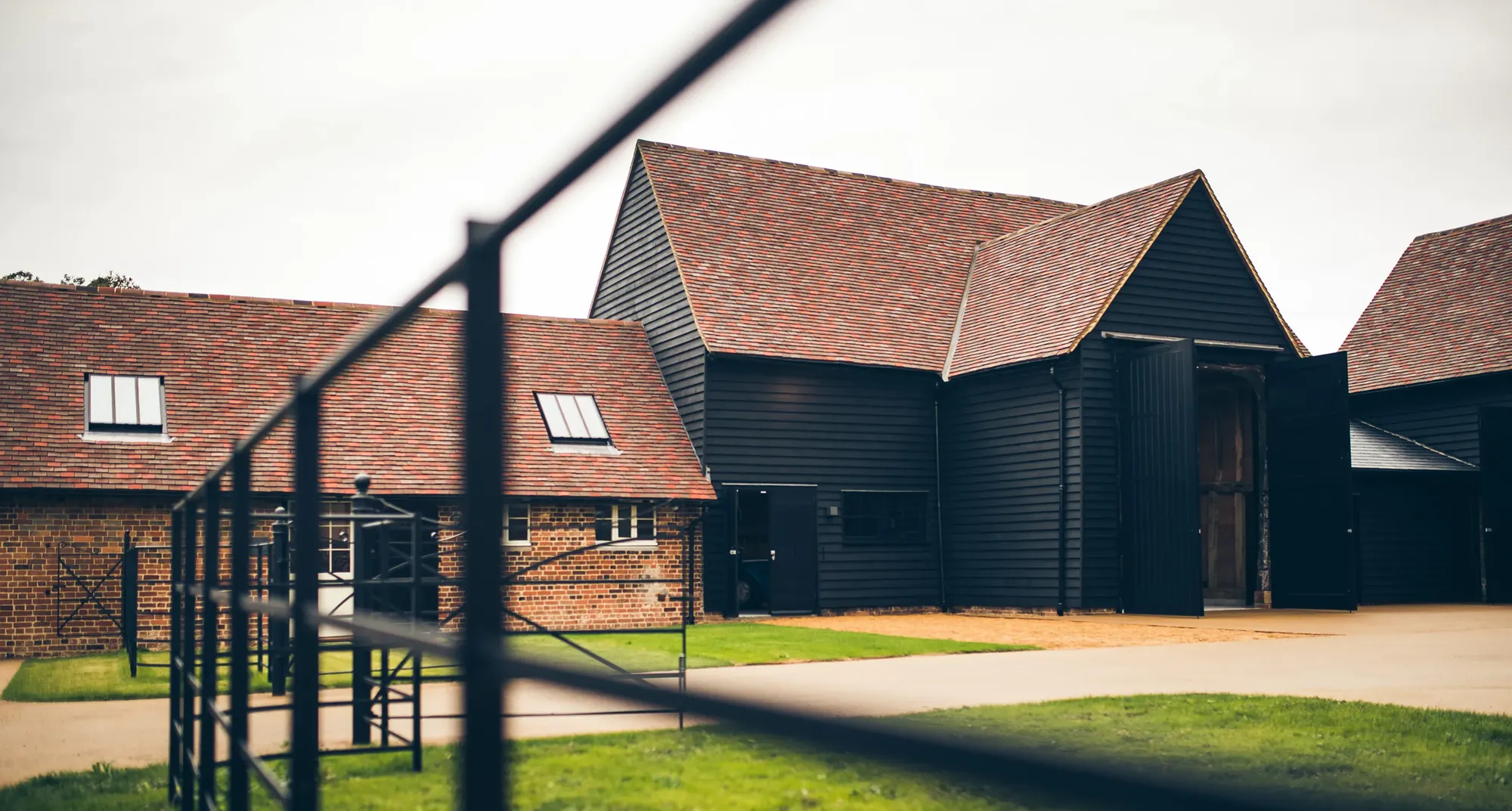
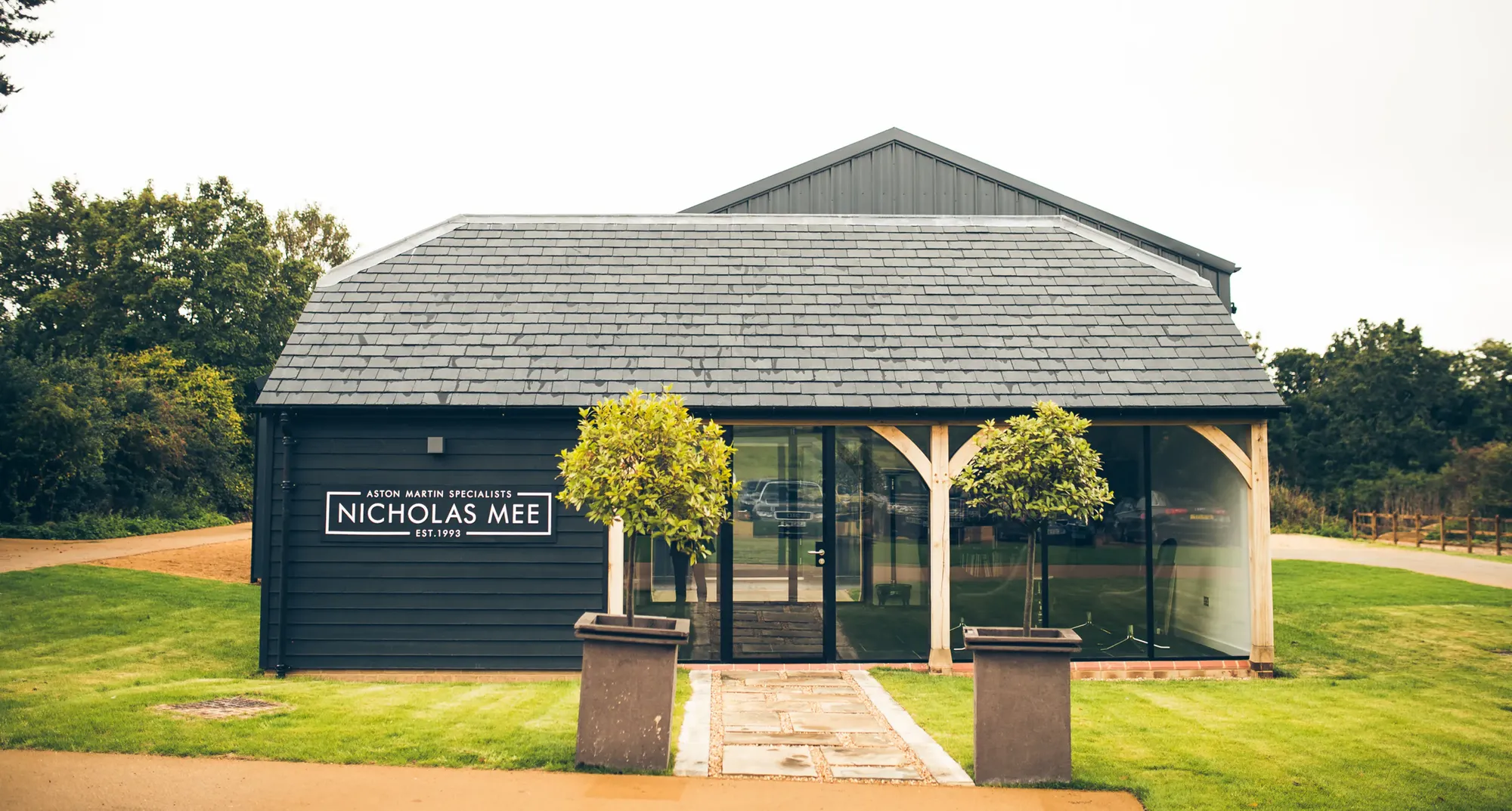
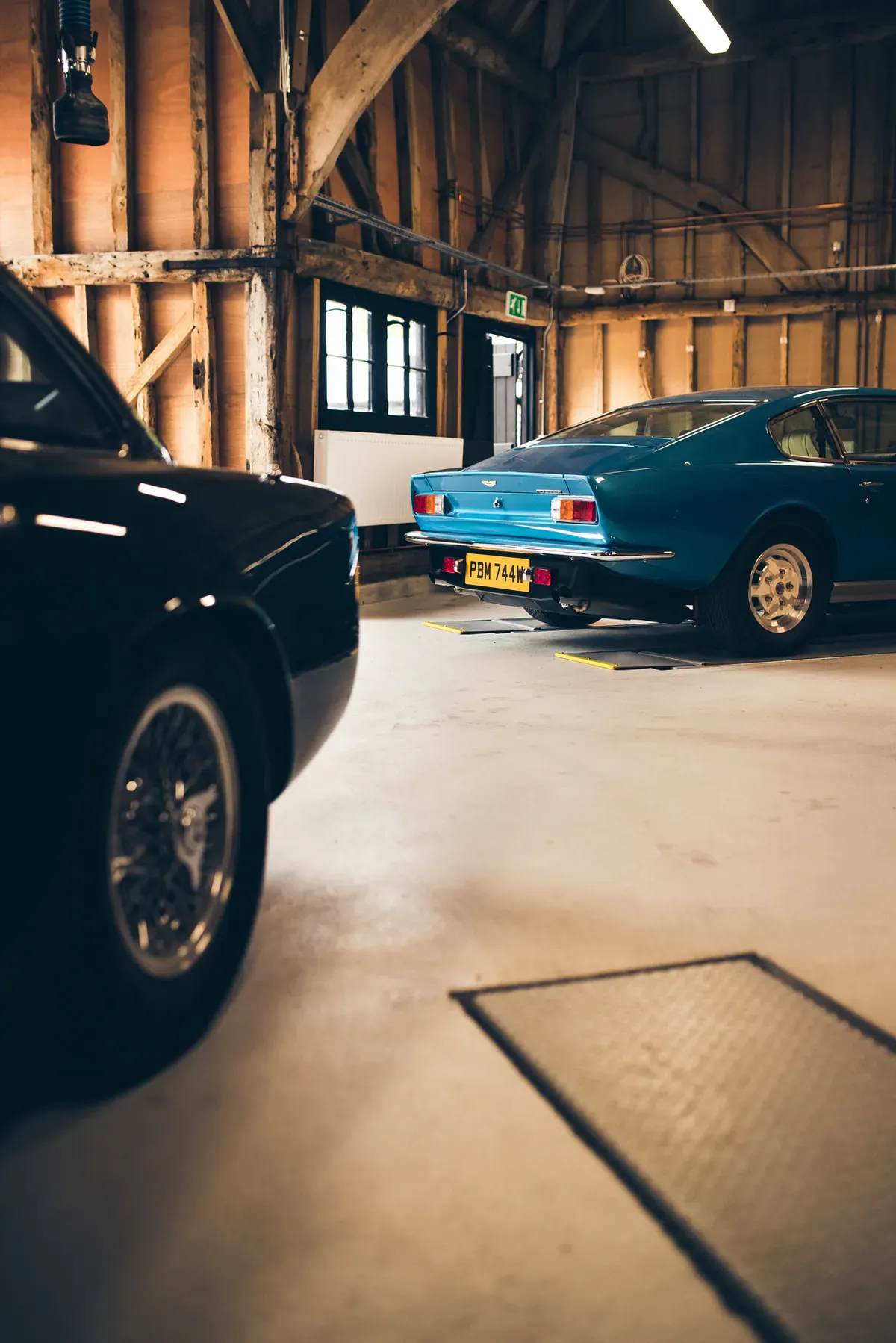
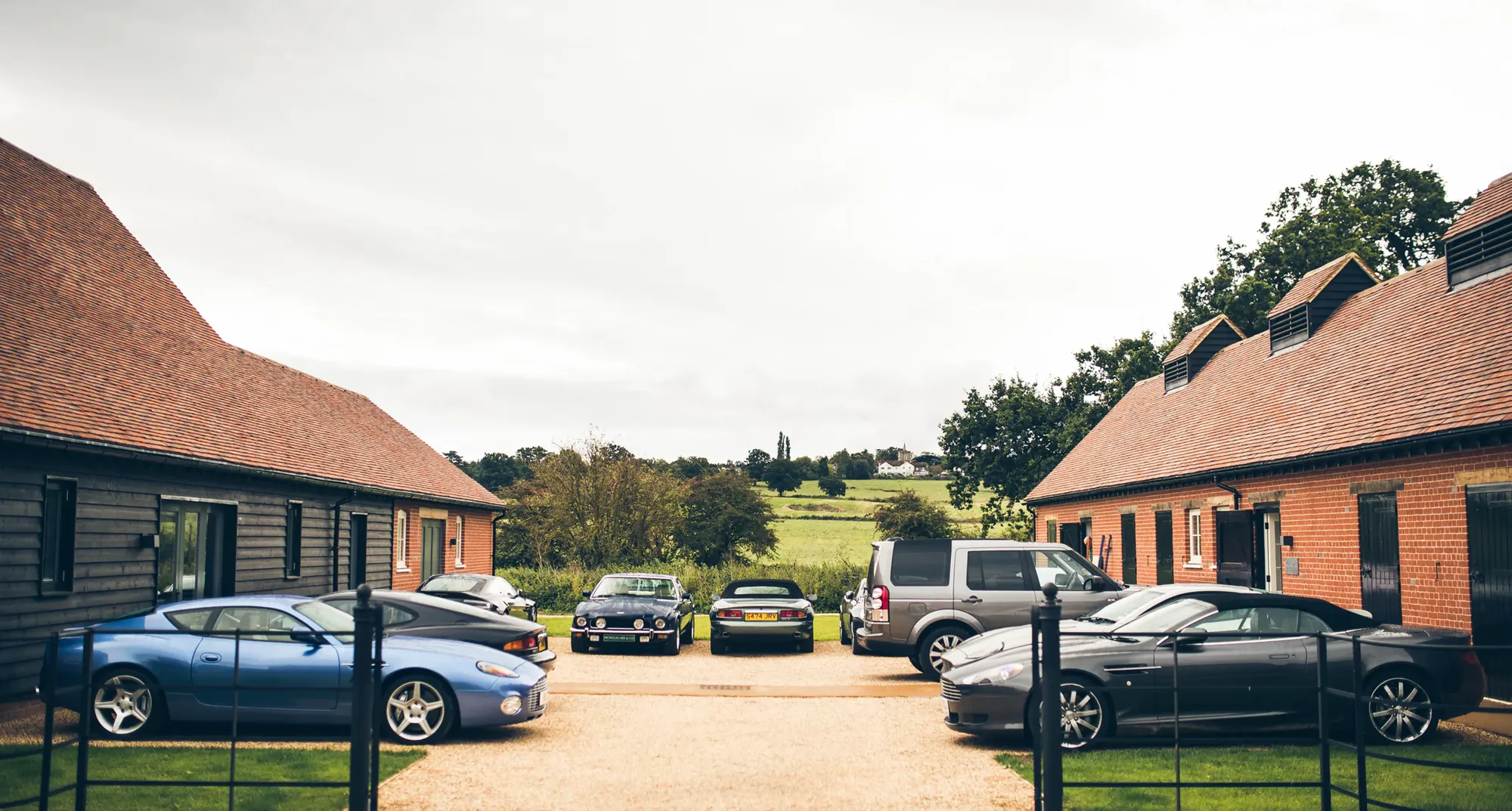

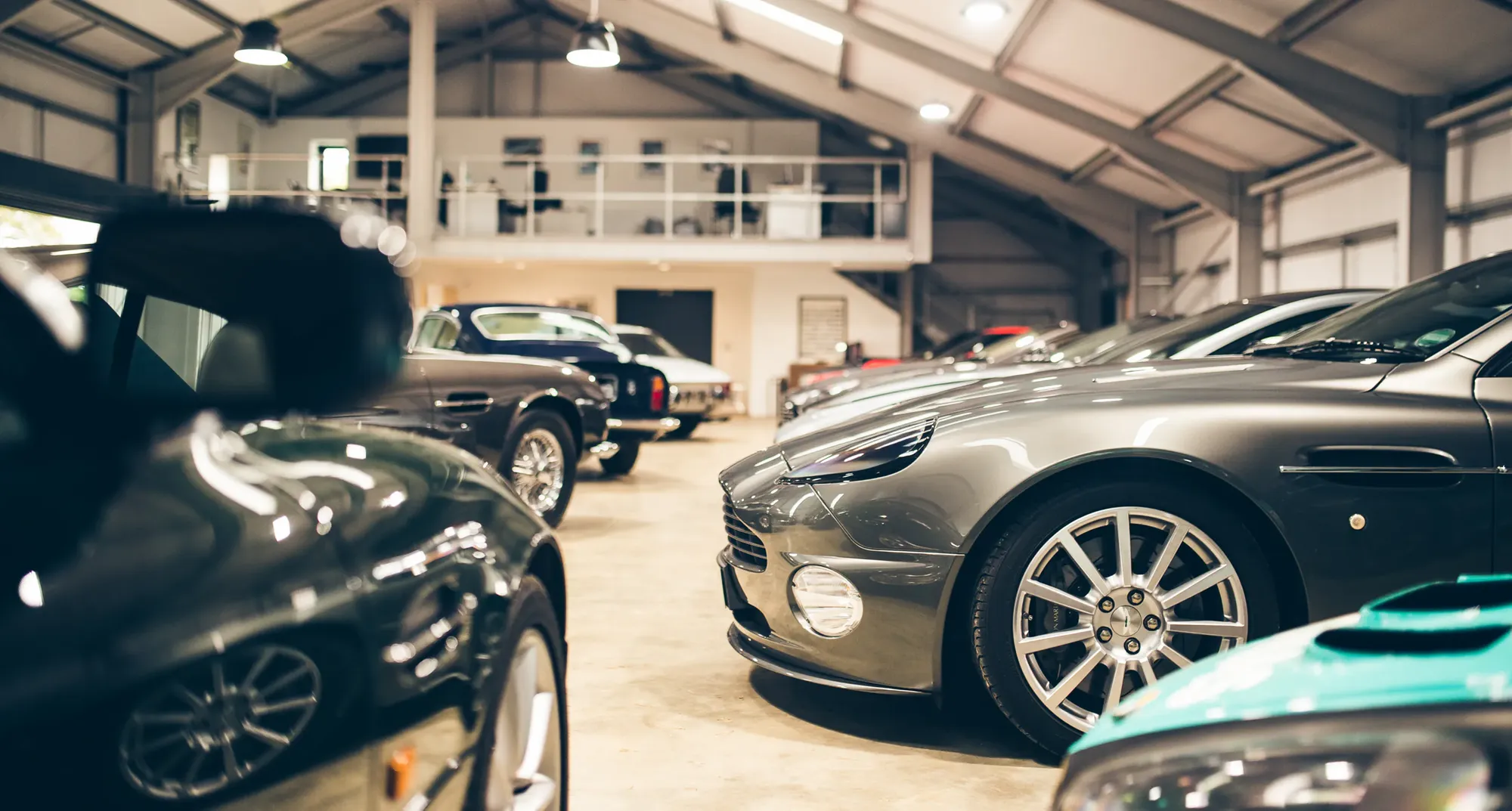
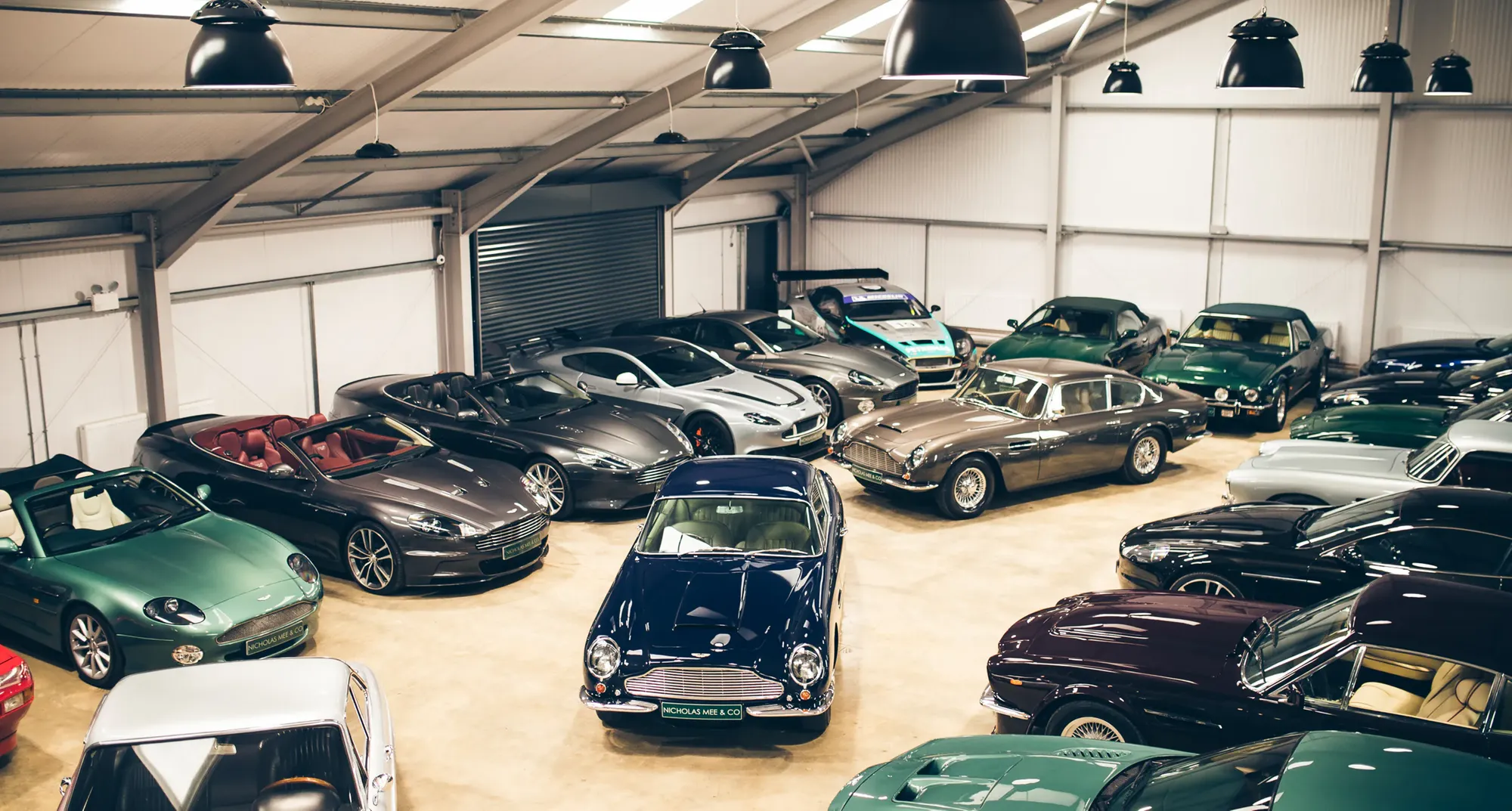
Source: Nicholas Mee & Co.
It's 2 acres approximately, and it's a massive benefit to us. One way I can quantify this is that within a week of moving here it was evident we had done the right thing. Before, if someone was coming to town, they would come and see us, but only after they’d visited their bank manager, their lawyer, dropped their wife off at Harrods, and so on. They’d arrive late, and frazzled, and you'd have a 45 minute window to show them a half-million pound motor car and try to get a decision out of them. It’s tricky, especially when they ask to drive the car and you say yes, but watch out for the 20 mph speed limits, speed bumps, bus lane cameras, Uber drivers, cargo delivery vans and so on…
When we moved up here and started receiving lots of visitors in May 2018, we were actually looking at our watches within two hours of opening thinking - when can we get on with the rest of our day? What we've developed here is a destination, where there's plenty for people to see, and we like to show people around. We like to sit them down, have a cup of coffee to calm down after their journey, and show them around, show them what we do, some cars, have good conversation and then yes, if we want to go out in a car, we open the gates and guess what - we're on some lovely roads! It’s not just sales too. Say we've just done a suspension rebuild on a car. A technician has got to get in that car and to road test it properly. To do that he's got to go out of London - frankly how many of our clients want to spend two hours’ technician’s labour just for them to get out of the city? It just doesn't work in London any more. This is a much nicer environment.
We also do events here. I've always said to the team that if you want to use chess as an analogy, we're in the business of selling the chess pieces. The people that buy them need a chess board to go and play on. So during the course of any one year, we put on three or four events - we called it the Ten Two Club. It's a Saturday thing, people come along and have some sausage rolls and coffees, kick tyres and meet other like-minded people. We do regular events with Aston Martin Owners Club members from the area, and we've had groups of people from PistonHeads and Supercar Driver and so on. When you've got the space that we have, you can do that, and people will travel because it's not London! We've got space here, lots of parking, sheep in the field next door. People enjoy coming here and we enjoy having them here. It's not all about a hard sell - it's all actually about a community, and we like to embrace the community and be part of it and participate in it.
We're coming up on time, so I've just got some quick fire questions left to finish with. The first one is: what's your greatest driving experience?
Difficult one that one. I think we've all got driving experiences, memories and memorable cars that we've driven, RSs and Daytonas and Stratos' and things like that from the ‘80s. I've had some fantastic drives across Europe in different Astons, several trips down to Le Mans. To actually say what is your greatest drive, very difficult, but certain ones that stick out in my mind are trips to Le Mans. Probably one of the better ones was about three or four years ago where I think I was driving a DB9, and three or four guys were in Vanquishes, and we were all heading down to Le Mans. We decided as we entered France to put into Google Maps ‘no autoroutes, no tolls’ etc., and it gave us a route that was entirely cross-country. Of course there was no one on it, and we just went hell for leather. Really irresponsibly, but it was a great drive. That's a more recent one, but yes, lots of drives down to the South of France. I don't have one particular, lots of track events and so on, but it's difficult to pinpoint one, it's unfair.
It's the magic of the satnavs now, where you end up in some bit of rural France, you're the only car for miles, the road is great and you can just have fun.
I'd recommend doing that to anybody! Set the nav to no autoroutes, no toll roads - it takes you through all these little villages, and these wonderful French roads with nobody on them!
The second question is: what is your favourite car marque other than Aston Martin?
Well I've had a succession of Mercedes-Benz, but that's not because they're the most exciting cars, it's just that actually I've always had a great of deal of respect for their engineering skills and the cars that they produce, particularly in the 1980s, several Cosworths and E500s and that sort of stuff. So I have a great deal of respect for Mercedes.
But if we were talking about fun, what would your pick be?
Most fun car? Well it gets very tricky. More than fun was one of the trips to Le Mans on which I drove a D-Type Jaguar there and back. That was an extraordinary experience - and also a short drive in the original DBR2. That's fun, when you've got 300-odd horsepower in something that weighs 800 kgs with reasonable brakes and skinny tires. That is fun. If you're asking about a contemporary car, I was invited by Alpine down to Goodwood 18 months ago or so, and I had a tremendous time in those little A110s, I think they're a great little car. It's unfortunate because that's the way sports cars should be going, but it's not the way manufacturers have been going, and it doesn't seem as if they're going to go that way any time soon. But I think they're a fantastic little car, because you can actually make it dance. I've got a thing about cars that I can make dance, and with excessive amounts of power and traction control, you just can't.
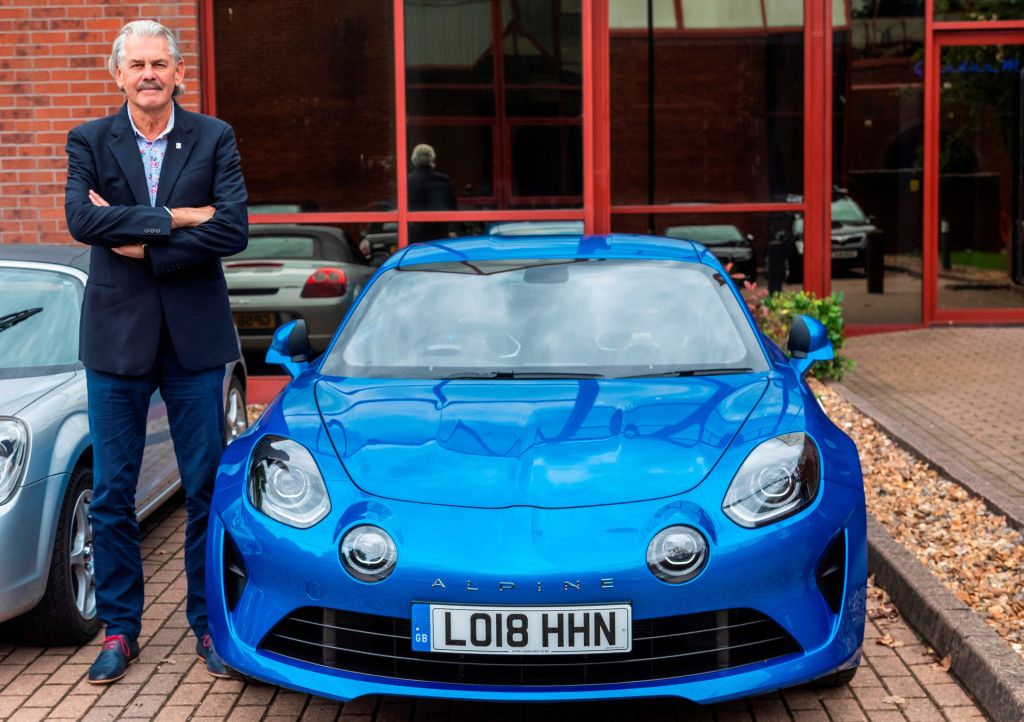
I think Gordon Murray has bought one as well for that reason - he runs an Alpine A110.
If I could think of a reason to use it regularly, I would buy one too!
My last question is: what do you prefer, a patinated classic car or a gleaming, fully restored example?
From a personal point of view, I quite like something that's got a little bit of use to it, so long as it's mechanically strong and safe. That's quite difficult because a lot of people won't spend money making their car strong and safe without doing the cosmetics as well. There is something about a gleaming fresh, brand new restored car that's a bit tricky, because you are suddenly a custodian of some form of perfection, and if you start using it the way that you might want to use it, as you would and should a sports car, then you are going to start devaluing that car to some degree. But I'd understand it from the point of view of an investment; people are going to want those cars in as beautiful a condition as possible, and to maintain it that way. But that's not, for me, the most fun. The most fun is to be able to get in a car and make it dance.
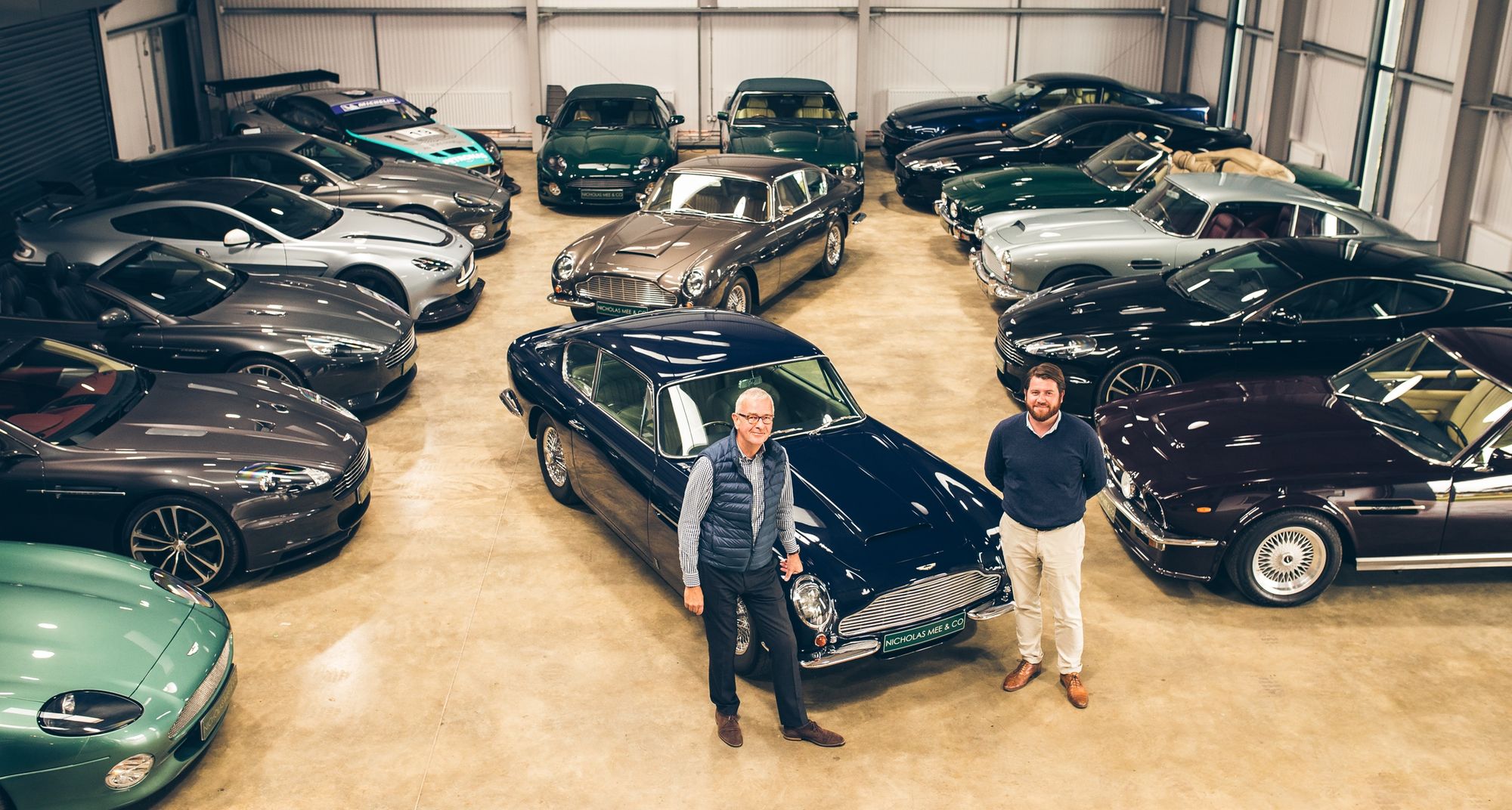
I think that's a great answer. Nick, I think that's all we've got time for today, so that just leaves me to thank you for such a fascinating chat, and hopefully we'll be able to visit you guys up at Nicholas Mee & Co. in the near future!
There is an open invitation whenever you would like to! Thank you very much, it's been a pleasure.
To find out more about Nicholas Mee & Co. and see their latest stock, please visit their website at https://www.nicholasmee.co.uk/.

